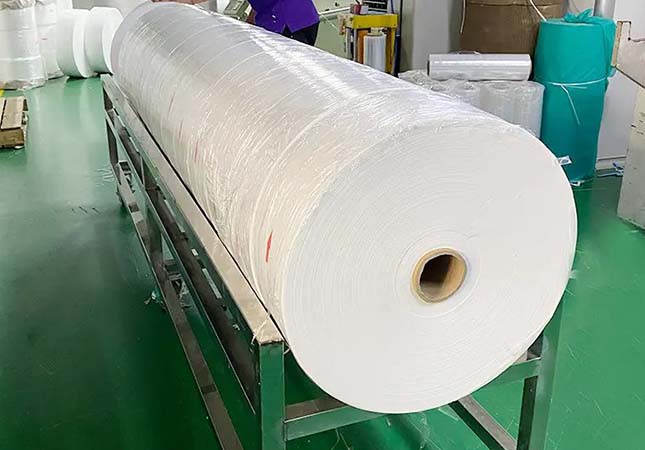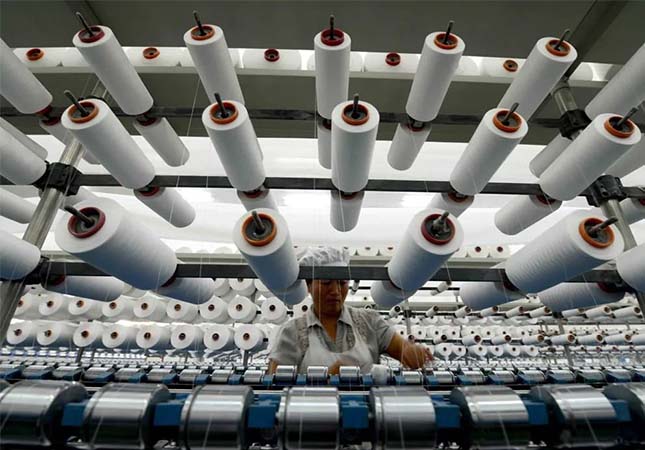With the development of technology and society, manufacturing industry update is a must. As one of the most critical industries in the manufacturing industry, improvement and change in the textile industry needs to be done in recent. As one of the most famous manufacturers, SUNTECH textile machinery is keeping updating to achieve the needs and exceptions of the customers and the textile industry.

The Upgrade of the Manufacturing Industry in China
There are reasons why China needs to upgrade its manufacturing industry.
1. Rising labor costs
The rising cost of labor is the main reason for the updates in manufacturers in China. As the Chinese economy has grown, wages have risen, making it less competitive as a low-cost manufacturing destination, other low-cost manufacturing countries like Vietnam and Bangladesh have emerged as competitors, as they offer lower labor costs than China. To remain competitive, China needs to move up the value chain and focus on higher-end manufacturing activities that require more skilled labor and more advanced technologies so that China can improve its productivity and competitiveness and maintain its position as a leading manufacturing hub.
2. Overcapacity and environmental concerns
In recent years, China has faced significant overcapacity in several industries, including steel, cement, and glass, which has led to low prices, reduced profitability, and increased pollution. And China is taking action positively by investing in new technologies and processes, reducing its reliance on fossil fuels, and improving its environmental performance, which will help to improve its global reputation and reduce the negative impact of manufacturing on its citizens' health.
3. Demographic shifts
China is currently experiencing significant demographic shifts, including an aging population and a declining working-age population. These trends are likely to impact China's manufacturing industry in several ways. First, as the population ages, there will be fewer workers available for labor-intensive manufacturing activities. Second, as the workforce declines, wages are likely to rise, making it less competitive as a low-cost manufacturing destination. To address these challenges, China needs to upgrade its manufacturing industry and focus on higher-end manufacturing activities that require more skilled labor and advanced technologies. By doing so, China can improve its productivity and competitiveness, and ensure that it can continue to drive economic growth even as its population ages.
4. Technological advancements
Nowadays, we have seen significant advances in robotics, artificial intelligence, and other advanced manufacturing technologies, which have the potential to transform manufacturing and make it more efficient, productive, and profitable. China is investing in these technologies and developing its own capabilities in areas such as robotics and automation. By doing so, China can improve its productivity, reduce labor costs, and ensure that it can continue to compete on a global scale.
How to Upgrade the Textile Industry Industry
The textile industry is a critical sector in many countries, providing employment opportunities and contributing significantly to their economies. To remain competitive and sustainable, the textile industry needs to upgrade its production processes and embrace new technologies. There are some ways through which the textile industry could overcome the upgrade.
1. Automation and robotics
One of the main ways in which the textile industry can be upgraded is through the use of automation and robotics. Many textile production processes are labor-intensive, which makes them expensive and time-consuming. By introducing automation and robotics, textile manufacturers can improve their productivity, reduce labor costs, and increase efficiency. Automation and robotics can be used in several textile production processes, including spinning, weaving, knitting, and dyeing. For example, automated spinning machines can produce yarn at a faster rate and with greater precision than human workers, while robotic weaving machines can produce fabrics with consistent quality and patterns.
2. Digitization
Digitization is a method that involves using digital technologies to automate production processes, improve product design and development, and enhance supply chain management. Digital technologies, such as 3D printing, can be used to create prototypes and samples quickly and at a lower cost than traditional methods, ensuring textile manufacturers reduce their time to market and respond more quickly to changing customer demands. By using technologies such as RFID (Radio Frequency Identification) tags and blockchain to track products and materials throughout the supply chain, digitization can improve supply chain management, helps to improve transparency, and traceability, and reduce the risk of fraud and counterfeiting.
3. Sustainable materials and processes
The textile industry is one of the most polluting industries globally, accounting for a significant proportion of global water and air pollution, so it is a must for textile manufacturers to embrace sustainable materials and production processes. One way to achieve this is by using sustainable raw materials such as organic cotton, hemp, and recycled polyester. Textile manufacturers can also adopt sustainable production processes such as closed-loop dyeing and waterless printing, which can reduce water consumption and wastewater discharge.
4. Circular economy
A circular economy model is also a way to upgrade the textile industry through the adoption of a circular economy model. A circular economy is an economic system that seeks to eliminate waste and maximize the use of resources. In the textile industry, a circular economy model involves designing products for reuse, repair, and recycling. Textile manufacturers can adopt circular design principles by designing products that are easy to disassemble and repair, using recycled materials, and designing for recyclability to reduce waste and improve the industry's environmental performance.
5. Collaboration and innovation
The textile industry can be upgraded through collaboration and innovation. Textile manufacturers can collaborate with suppliers, customers, and other stakeholders to identify new technologies and production processes that can improve their operations. Innovation can also be encouraged through the establishment of research and development centers, which can help textile manufacturers to develop new products and technologies. Governments can also provide support through research funding and tax incentives for innovation.

The Upgrade of SUNTECH Textile Machinery
SUNTECH, being a specialized and leading brand of textile machinery, has accumulated extensive experience in the development, production, supply, and sales of textile machinery since 1970. For these 50 years, what SUNTECH do is not just to be a successful company, but also embed value creation in everything we do for customers.
In recent years, SUNTECH textile machinery is updated to meet the changing demands of the industry. Some of the upgrades include:
1. Automation: SUNTECH has been incorporating advanced automation technologies, such as robotics, artificial intelligence (AI), and machine learning, into their textile machinery to enhance textile production processes. The implementation of automation has resulted in improved efficiency, productivity, and accuracy.
2. Sustainability: SUNTECH is committed to developing and providing more sustainable textile machinery that consumes less energy, produces less waste, and has a lower environmental impact. This focus on sustainability has allowed textile manufacturers to reduce their carbon footprint and promote eco-friendly production processes.
3. Digitalization: SUNTECH has been integrating cutting-edge digital technologies, such as 3D printing, computer-aided design (CAD), and virtual prototyping, into their textile machinery. This has enabled textile manufacturers to create and test new designs quickly and efficiently, enhancing production processes.
4. Smart Textiles: SUNTECH has been at the forefront of developing textile machinery that can produce smart textiles with embedded sensors, microchips, and other electronic components. This innovation has opened up new opportunities for wearable technology and medical textiles.
5. Personalization: SUNTECH has been developing textile machinery that can produce customized textiles quickly and efficiently, responding to changing consumer demands and catering to individual needs and preferences. This capability has enabled textile manufacturers to enhance their competitiveness in the market.
Conclusion
Overall, the update of textile is a must for the manufacturers to maintain competitiveness, the upgrade of SUNTECH textile machinery have helped to improve the efficiency, productivity, and sustainability of textile production processes. As the textile industry continues to evolve, SUNTECH is likely to continue to innovate and develop new technologies to meet the changing demands of the industry.
SUNTECH provides the textile industry machines to the whole world, helps them to improve the efficient, decrease the labor costs. SUNTECH offers numerous types of textile machinery: visual inspection defects, fabric measure and cutting machine, fabric swatch cutter, beam truck, trolley lift system, fabric roll cutting machine etc. If you are interested in us, please contact us now!




